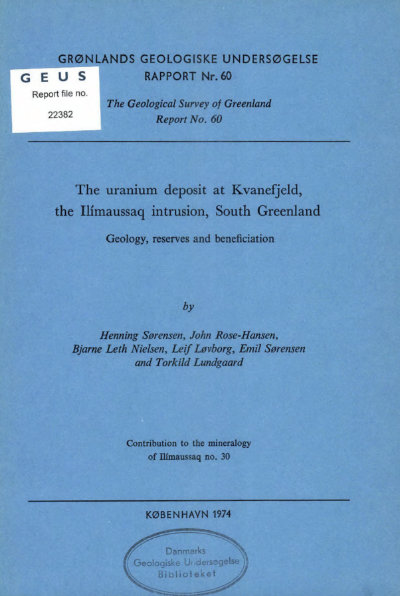The uranium deposit at Kvanefjeld, the Ilímaussaq intrusion, South Greenland, Geology, reserves and beneficiation
DOI:
https://doi.org/10.34194/rapggu.v60.7370Abstract
The uranium-thorium deposit is located in part of an alkaline intrusion consisting of peralkaline, agpaitic nepheline syenites. The radioactive minerals are steenstrupine, uranium-rich monazite, thorite and pigmentary material. The radio-element content varies from 100 to 3000 ppm U and 300 to 15000 ppm Th. Reasonably assured ore in the main area with a grade of 310 ppm is calculated to 5800 metric tons of uranium in 18.6 million metric tons of ore. Estimated additional reserves with a grade of 292 ppm U are 29.4 million tons of ore with 8700 tons of uranium and 3.5 million tons of ore with a grade of 350 ppm yielding 1200 tons of uranium. Estimates of amounts of thorium ore are 2.6 times those of uranium. A method of recovery of the uranium based on sulphating roasting and subsequent leaching with water is described.
Downloads
Published
Issue
Section
License
This article is distributed under a CC-BY 4.0 licence, permitting free redistribution and reproduction for any purpose, even commercial, provided proper citation of the original work. Author(s) retain copyright over the article contents.


